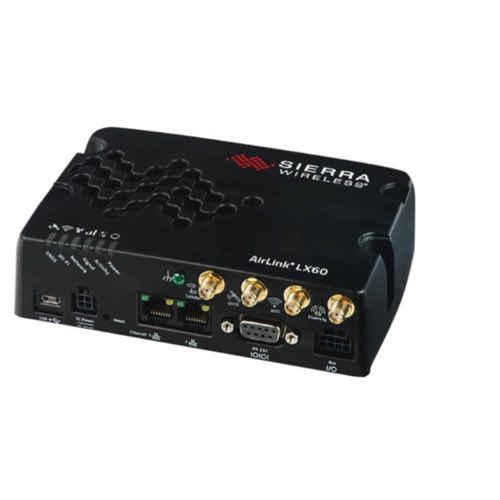LX60 Routers

Semtech LX60 Routers are part of Semtech's advanced AirLink series and stands as a testament to their dedication to providing top-tier IoT solutions. The LX60 is a compact, durable, and powerful router that offers an impressive blend of advanced functionality and ease-of-use, despite its modest size.
One of the key features of the LX60 is its "plug-and-play" functionality. It provides quick, out-of-the-box LTE connectivity, a feature that has become indispensable in a wide array of operational environments, including small and medium businesses, retail, and commercial applications. It's designed to manage a variety of applications, seamlessly integrating with devices like IP cameras, security systems, point-of-sale terminals, and industrial equipment.
More Information about Semtech LX60 Routers
An essential aspect of the LX60's functionality lies in its ability to offer mission-critical connectivity, serving as a reliable backup during times when primary broadband connections fail. The LX60 integrates the AirLink Management Service (ALMS), a cloud-based platform by Semtech. This innovative feature allows users to remotely monitor, manage, and troubleshoot LX60 devices, regardless of their location. The ALMS platform offers real-time analytics and reporting, enabling proactive resolution of network issues, thereby ensuring minimal downtime.
With its lower operational costs, extended lifespan, and the ability to scale operations by incorporating more LX60 units, the LX60 stands as a versatile solution for evolving business requirements. It's not just a piece of hardware; it's a trusted ally in facilitating the growth and efficiency of businesses around the world.
Basics of Switches, Routers & Hubs
Ethernet hubs, switches and routers connect computers to networks, devices and other computers.
Ethernet hubs are the least intelligent of the three devices. They simply take any message that is received and transmits it to every other device connected to that hub. For example, if CPU 1 on a network wants to send a message to CPU 5, it will send that message through the hub.The hub will then take that message and send it out to every connected device on that hub regardless of the intended target. When CPU 5 receives that message and wants to respond, it will send its response through the hub which sends it to every connected device. Ethernet hubs do not manage any data that is sent and tend to bog down networks. They also do not offer much security for the network. For these reasons, Ethernet hubs are are being replaced with network switches.
Switches transmit data from one device to another on the same network. Unlike a hub, switches use a switch table to learn where data came from and where to send it. Switch tables store Mac addresses and device ports. By storing this data, a switch can operate more efficiently than a hub, greatly reducing the traffic within the network.
Routers transfer data between devices while learning the location of those devices within the network. They are also a junction between two or more networks. An example of this would be a home router where the home network is connected to the Internet. Another example would be when the router connects two or more networks with different business functions. In addition to connecting two or more networks, a router offers important security features that help protect the network.

